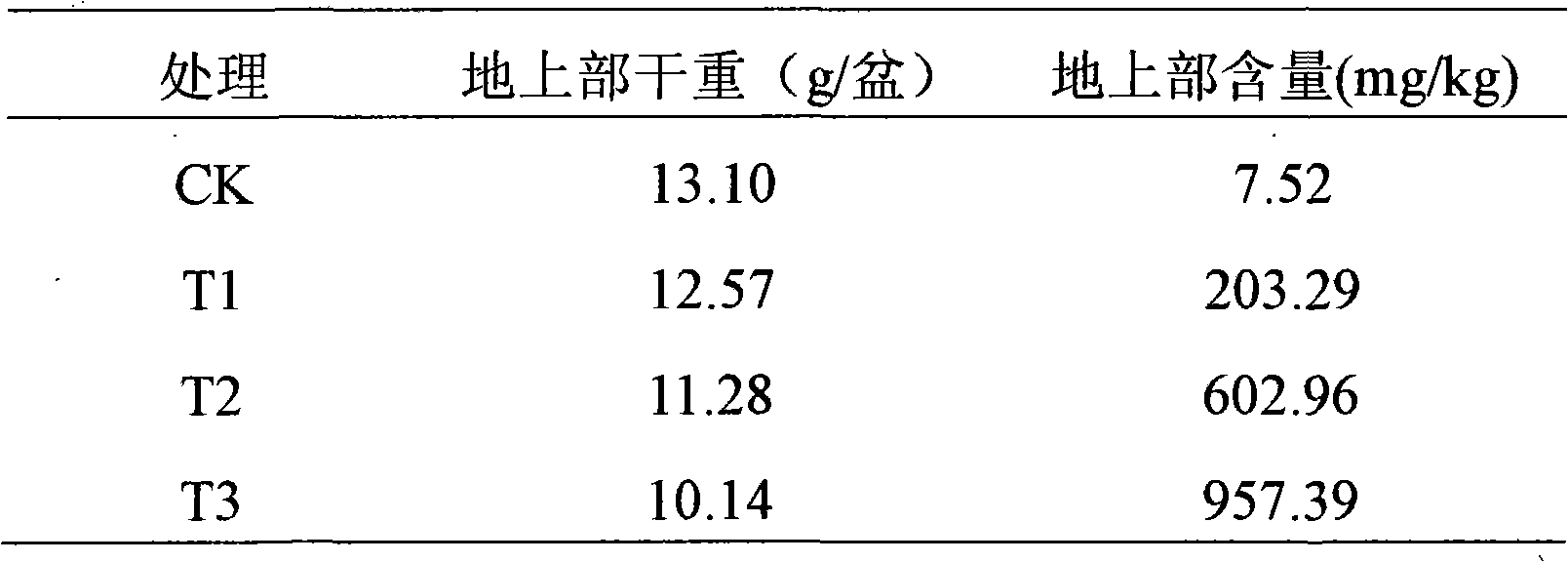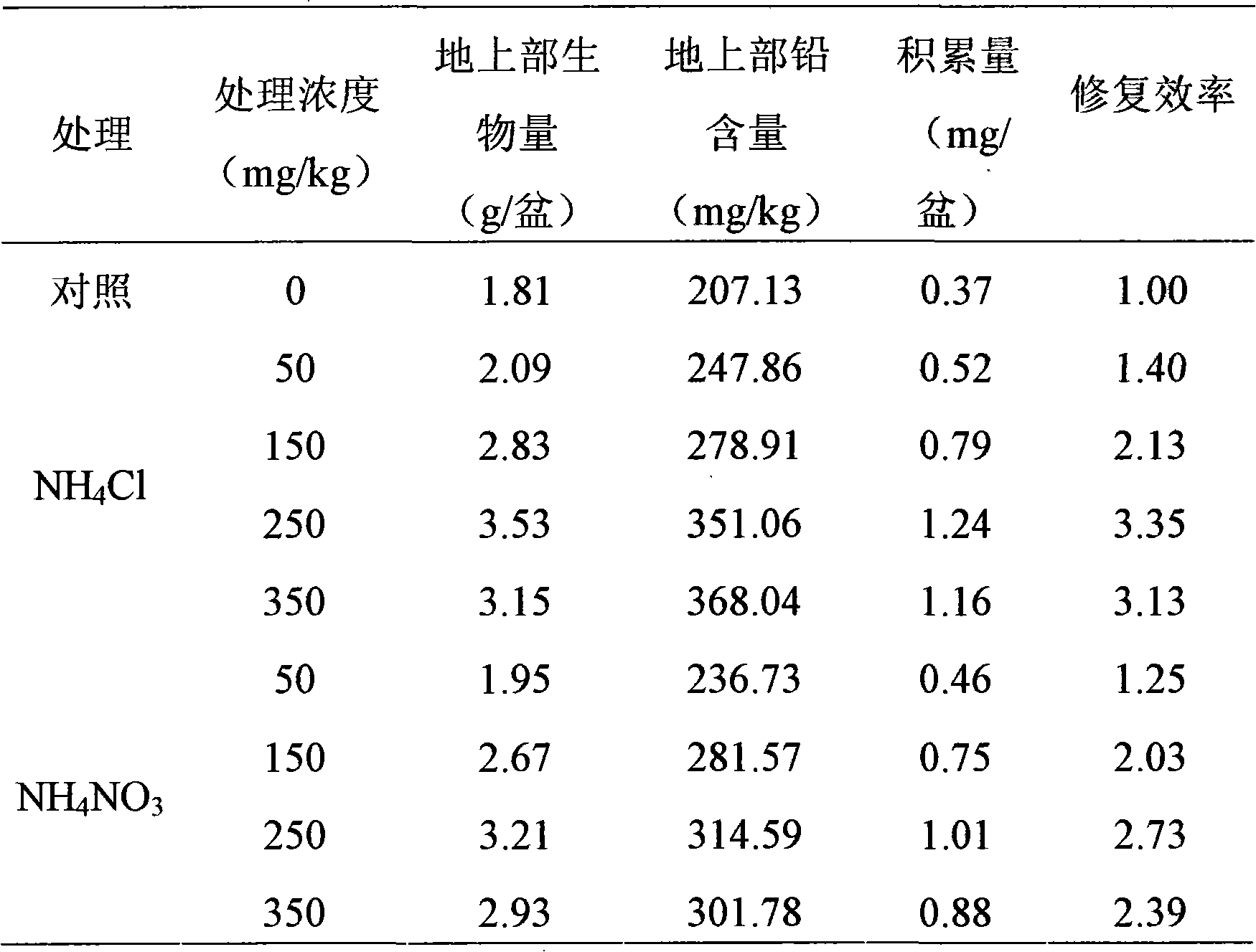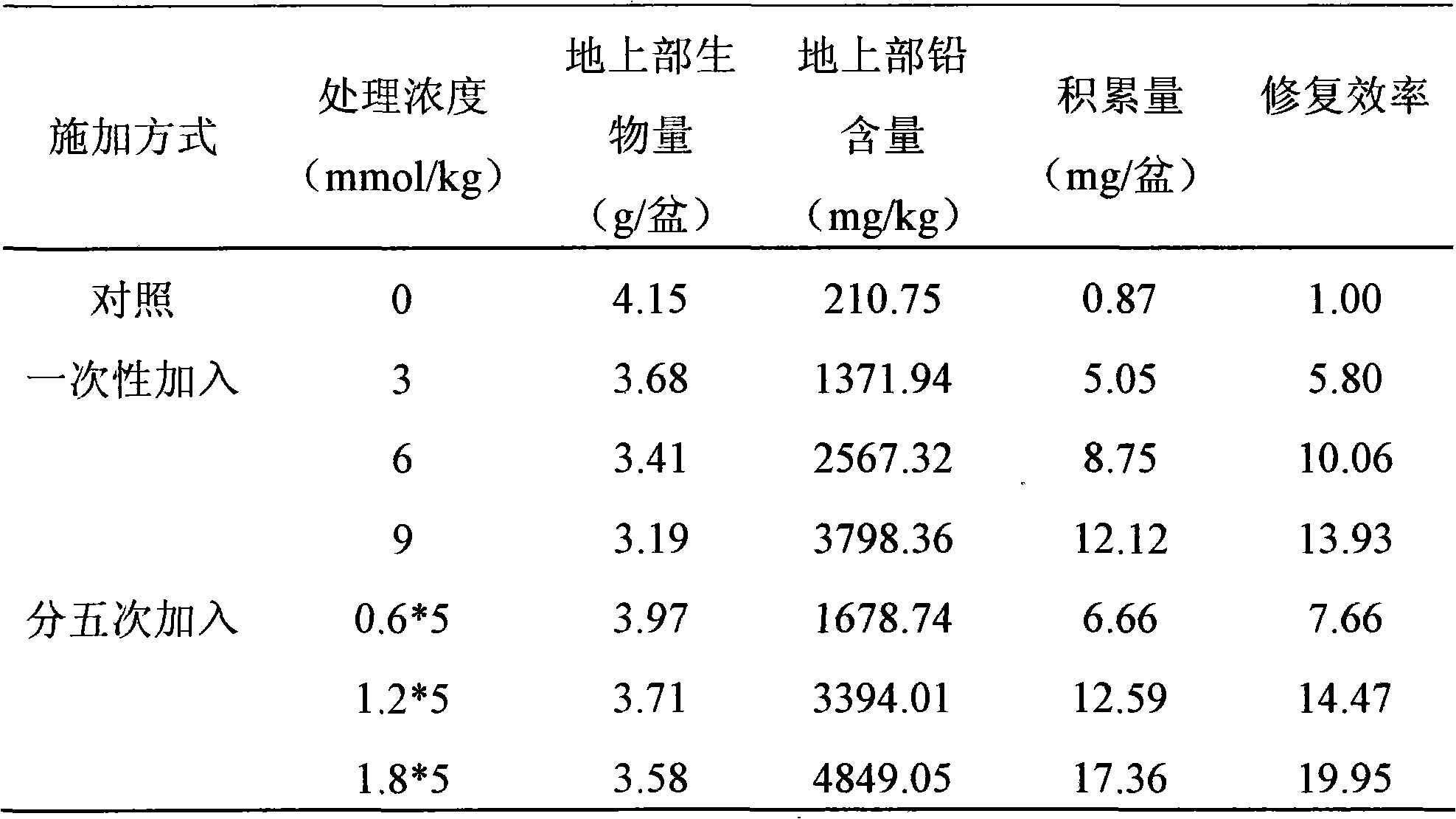Method for restoring lead polluted soil by in-situ strengthening plant
A lead-contaminated soil and phytoremediation technology is applied in the field of in-situ enhanced phytoremediation of lead-contaminated soil, and can solve problems that have not yet been reported.
- Summary
- Abstract
- Description
- Claims
- Application Information
AI Technical Summary
Problems solved by technology
Method used
Image
Examples
Embodiment 1
[0013] Example 1: There is no pollution source around the potted experiment site, which is an area not polluted by heavy metals. The soil used in the experiment was collected from the topsoil (0-20cm) of the fallow land (a pollution-free area), and the soil type was meadow brown soil. A total of 4 concentrations were set in the experiment, which were the control CK (without adding Pb) and 3 different Pb concentration treatments. Pb concentration: 1000mg / kg (T1), 3000mg / kg (T2), 5000mg / kg(T3), which are 2, 6, and 10 times of the third-grade standard of my country's soil environmental quality standard (GBl5618, 1995), respectively, and the form of heavy metal added is Pb(NO 3 ) 2 , add it to the soil in solid form, mix well, and use it half a year after balancing.
[0014] The aster seeds are grown indoors, and the aster seeds are placed in a seedling box pre-loaded with sand. The ratio of sand to soil is 1:3. When the seedlings grow to 5-6 leaves, select the seedlings with th...
Embodiment 2
[0019] Example 2: There is no pollution source around the potted experiment site, which is an area not polluted by heavy metals. The soil used in the experiment was collected from the topsoil (0-20cm) of the fallow land (a pollution-free area), and the soil type was meadow brown soil. The lead content added in the soil is 1000mg / kg, which is twice the level 3 standard of my country's soil environmental quality standard (GBl5618, 1995), and the form of heavy metal added is Pb(NO 3 ) 2 , add it to the soil in solid form, mix well, and use it half a year after balancing.
[0020] The aster seeds are raised indoors, and the aster seeds are placed in a seedling box prepacked with sand, and the ratio of sand to soil is 1:3. When the seedlings grow to 5-6 leaves, the aster seedlings with the same growth are selected and transplanted. 2 weeks after transplanting, apply NH to the soil respectively 4 NO 3 , NH 4 Cl two kinds of acidic fertilizers, their addition amount is respectiv...
Embodiment 3
[0024] Example 3: There is no pollution source around the potted experiment site, which is an area not polluted by heavy metals. The soil used in the experiment was collected from the topsoil (0-20cm) of the fallow land (a pollution-free area), and the soil type was meadow brown soil. The lead content added in the soil is 1000mg / kg, which is twice the level 3 standard of my country's soil environmental quality standard (GBl5618, 1995), and the form of heavy metal added is Pb(NO 3 ) 2 , add it to the soil in solid form, mix well, and use it half a year after balancing.
[0025] The aster seeds are raised indoors, and the aster seeds are placed in a seedling box prepacked with sand, and the ratio of sand to soil is 1:3. When the seedlings grow to 5-6 leaves, the aster seedlings with the same growth are selected and transplanted. Planted in the above soil, and then applied the biodegradable chelating agent EDDS in two ways: one-time addition and five-time application. The spec...
PUM
 Login to View More
Login to View More Abstract
Description
Claims
Application Information
 Login to View More
Login to View More - R&D
- Intellectual Property
- Life Sciences
- Materials
- Tech Scout
- Unparalleled Data Quality
- Higher Quality Content
- 60% Fewer Hallucinations
Browse by: Latest US Patents, China's latest patents, Technical Efficacy Thesaurus, Application Domain, Technology Topic, Popular Technical Reports.
© 2025 PatSnap. All rights reserved.Legal|Privacy policy|Modern Slavery Act Transparency Statement|Sitemap|About US| Contact US: help@patsnap.com



